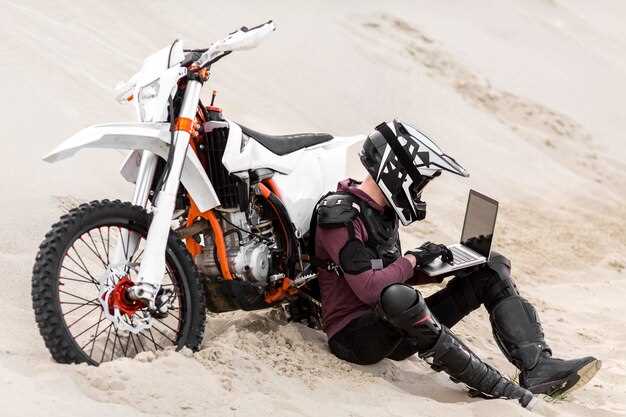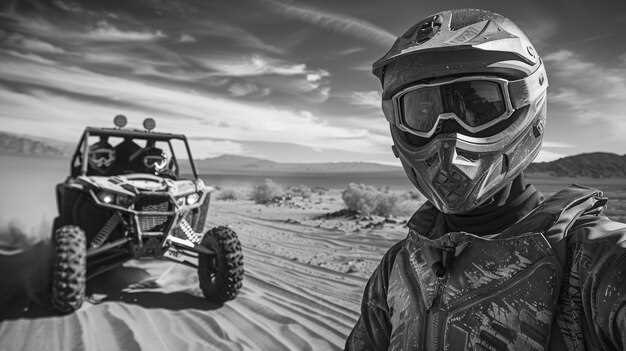
In the thrilling world of off-road racing, Utility Task Vehicles (UTVs) have emerged as a favorite choice among enthusiasts and competitors alike. These rugged machines offer an unbeatable combination of power, agility, and versatility, making them perfect for tackling challenging terrains. As the popularity of UTV racing continues to grow, it becomes crucial for racers to know which brands and models stand out in the crowded market.
When it comes to performance, not all UTVs are created equal. Certain brands have established themselves as industry leaders by consistently delivering exceptional quality, innovative technology, and cutting-edge designs. These manufacturers understand the unique demands of off-road racing and have tailored their vehicles to meet the rigorous requirements of competitive drivers.
This article will delve into the best UTV brands and models specifically geared for off-road racing. We will explore the features that set these vehicles apart, including engine performance, suspension systems, and durability, ensuring you make an informed choice for your racing adventures. Whether you are a seasoned racer or a newcomer eager to make your mark, understanding the top options available can significantly enhance your off-road experience.
Top Performance UTVs for Competitive Racing
For enthusiasts of off-road racing, having the right UTV can make all the difference in performance and success on the track. Here is an overview of some of the top-performing UTVs that excel in competitive racing environments. These models are equipped with powerful engines, advanced suspension systems, and lightweight constructions to tackle any terrain.
| Brand | Model | Engine | Horsepower | Weight | Best Feature |
|---|---|---|---|---|---|
| Polaris | RZR Pro R | 2.0L Twin Cylinder | 225 hp | 1,750 lbs | Class-leading power-to-weight ratio |
| Can-Am | Maverick X3 Turbo RR | 900cc Turbocharged | 195 hp | 1,800 lbs | Dynamic Power Steering and Smart-Lok |
| Yamaha | YXZ1000R SS | 998cc Inline Triple | 115 hp | 1,650 lbs | Five-speed transmission with paddle shifters |
| Kawasaki | KRX 1000 | 999cc Twin Cylinder | 112 hp | 1,600 lbs | Outstanding suspension travel and ground clearance |
| Honda | Talons R | 999cc Parallel Twin | 104 hp | 1,600 lbs | Innovative Dual Clutch Transmission |
Each of these UTVs offers unique advantages that cater to different aspects of racing, from speed and agility to handling and stability. When choosing a UTV for competitive racing, consider factors such as engine performance, weight distribution, and the specific demands of the race conditions. This ensures optimal performance and enhances the chances of success on the track.
Durability and Reliability in UTV Brands
When it comes to off-road racing, the durability and reliability of UTV brands play a crucial role in performance and safety. UTVs are subjected to extreme conditions, including rough terrain, harsh weather, and demanding driving styles. Therefore, manufacturers prioritize the construction and materials used in their vehicles to ensure they can withstand these challenges.
Brands like Polaris and Can-Am are renowned for their robust engineering and high-quality components. Polaris models often feature a sturdy chassis and reinforced suspension systems, which provide excellent stability and handling. Similarly, Can-Am is known for its innovative design and powerful engines, ensuring that their UTVs perform reliably under pressure.
Yamaha also stands out in the durability spectrum with its Wolverine and RMAX series. These models utilize advanced materials and a meticulous manufacturing process to enhance their resilience against impacts and wear. The brand emphasizes long-term performance, making them a favorite among serious racers.
In terms of reliability, Honda’s Pioneer series is designed for those who seek dependable performance. Honda is synonymous with durability, backed by years of experience in the powersports industry. Their vehicles are known for minimal maintenance requirements, making them ideal for extended races and arduous conditions.
Another key factor in durability is the availability of aftermarket support and parts. Brands like Arctic Cat and John Deere not only produce rugged UTVs but also offer extensive support and readily available replacement parts, leading to quicker repairs and less downtime during races.
Ultimately, choosing a UTV brand with a proven track record of durability and reliability is essential for any off-road racing enthusiast. The combination of high-quality construction, strong materials, and brand reputation can significantly impact a racer’s success on the track.
Power and Engine Specifications: What to Consider
When selecting a UTV for off-road racing, power and engine specifications are crucial factors that directly influence performance. Understanding these specifications can help racers make informed decisions that align with their racing goals.
Engine Type: The two primary engine types found in UTVs are four-stroke and three-cylinder engines. Four-stroke engines are known for their reliability and fuel efficiency, while three-cylinder engines typically offer more power and quicker acceleration. Assess your racing style to determine which engine type suits you best.
Horsepower and Torque: Horsepower indicates the overall output and speed capabilities of the UTV, while torque measures the engine’s pulling power. Higher horsepower is advantageous for reaching top speeds, but torque is essential for navigating steep terrains and heavy obstacles. A balanced combination of both is ideal for off-road racing.
Displacement: Engine displacement, measured in cubic centimeters (cc), affects power delivery and performance characteristics. Generally, larger displacement engines provide more power, but considerations must be made regarding weight and maneuverability. Analyze the type of racing you are participating in to determine the appropriate displacement.
Fuel System: UTVs utilize either carbureted or fuel-injected systems. Fuel injection systems offer better fuel efficiency and smoother acceleration, making them preferable for competitive racing. However, some racers may prefer the simplicity and lower maintenance demands of carbureted engines.
Cooling System: An efficient cooling system is vital for maintaining optimal engine temperatures during races. Look for UTVs with advanced cooling technologies such as liquid cooling, which can help prevent overheating and ensure consistent performance during challenging conditions.
Transmission Type: The type of transmission can significantly impact power delivery. UTVs may feature manual, automatic, or continuously variable transmissions (CVT). Automatic and CVT systems are favored for their ease of use and ability to provide seamless power transitions. In contrast, manual transmissions can offer more control in specific racing conditions.
In summary, when evaluating UTVs for off-road racing, consider engine type, horsepower, torque, displacement, fuel system, cooling systems, and transmission types. Each specification plays a role in determining how well a UTV will perform under the demands of competitive racing.
Suspension Systems: Key Features for Off-Road Racing
Suspension systems are critical for optimal performance in off-road racing, influencing both handling and ride quality. A well-designed suspension provides stability, traction, and comfort over rough terrains.
One key feature is the type of suspension layout. Independent suspension allows each wheel to move independently, improving traction and ride comfort on uneven surfaces. This design minimizes wheel lift, aiding in maintaining contact with the ground and enhancing stability during high-speed cornering.
Shock absorbers are another essential component. High-performance shocks, often adjustable, provide better dampening to manage the impacts from obstacles. This control helps prevent bottoming out and ensures that the vehicle remains stable over jumps and rough terrain.
Long travel suspension is particularly important in off-road racing. Increased travel allows for greater wheel movement, absorbing bumps and dips effectively. This results in improved handling and reduces the chance of tire damage, maintaining speed and control.
Another consideration is the spring rate. Springs that are too soft may bottom out, while those that are too stiff can lead to a harsh ride. A balanced spring rate enables the UTV to absorb shocks while maintaining control and keeping the tires planted.
Adjustability is a vital aspect of modern suspension systems. Many UTVs feature adjustable preload, compression, and rebound settings. These allow racers to fine-tune the suspension for varying track conditions, driver preferences, and weight loads. Proper adjustments can lead to improved performance and comfort levels during a race.
Finally, durability is a crucial feature in off-road racing suspension systems. Components must withstand significant stress and harsh conditions. High-quality materials and construction can prevent failures and maintain performance over time, providing a competitive edge.
Comparing Price Points Among Popular UTV Models

When considering the best UTVs for off-road racing, price is a significant factor that consumers must evaluate. Below is a comparison of price points among popular UTV models to help potential buyers make informed decisions.
-
Polaris RZR XP Turbo:
Starting at approximately $21,499, the RZR XP Turbo is known for its powerful engine and advanced suspension system. It’s ideal for competitive racing.
-
Kawasaki Teryx KRX 1000:
This model typically starts around $21,999. The Teryx KRX 1000 offers great durability and off-road capability, making it a versatile choice for various terrains.
-
Can-Am Maverick X3:
Prices begin at around $22,999. The Maverick X3 is renowned for its superior handling and turbocharged performance, fitting for enthusiasts and racers.
-
Yamaha YXZ1000R:
With a starting price of about $19,999, the YXZ1000R features an innovative manual transmission, appealing to race purists who desire full control.
-
Honda Talon 1000R:
Priced from $20,999, the Talon 1000R emphasizes a balance of speed and stability, making it an attractive option for serious off-road racers.
In summary, while all these models are equipped for racing, their price points vary significantly. Consumers should consider what features are most important, such as engine power, suspension, and versatility, against their budget. By analyzing these factors, buyers can select a UTV that meets their racing and recreational needs efficiently.
Expert Recommendations and User Experiences with UTVs
When selecting a UTV for off-road racing, it’s crucial to consider insights from both industry experts and actual users. Brands such as Polaris, Can-Am, and Yamaha consistently receive praise for their performance, reliability, and innovation. Experts often recommend the Polaris RZR Turbo as a top choice because of its powerful engine and intuitive handling, making it ideal for competitive environments.
The Can-Am Maverick X3 stands out for its advanced suspension system, enabling superior shock absorption and stability on rough terrain. This model has garnered accolades from professionals for its ability to maintain speed while navigating obstacles, providing an edge during races. User reviews highlight the Maverick’s spacious cockpit and comfort during long rides, which is essential in competitive scenarios.
Yamaha’s YXZ1000R is frequently mentioned for its impressive manual transmission and agility. Many users appreciate its sport-oriented design that allows for sharp turns and rapid acceleration, crucial elements in off-road racing. A common sentiment among racers is that the YXZ provides a more engaging driving experience compared to other UTVs.
User experiences emphasize the importance of maintenance and aftermarket support when choosing a UTV. Brands that offer extensive dealer networks and readily available parts tend to receive higher satisfaction ratings. For instance, the ability to customize the vehicle with performance parts can significantly enhance the off-road racing experience, making models from established brands more appealing.
Community forums and racing groups often stress the value of joining local clubs or online communities, where enthusiasts can share their experiences and recommendations on the best UTVs for racing. Many users find this exchange of knowledge invaluable for understanding the nuances of vehicle performance and modifications that can improve racing outcomes.
In summary, selecting the best UTV for off-road racing involves synthesizing expert recommendations with real-world experiences. The top models from Polaris, Can-Am, and Yamaha consistently rise to the forefront, supported by both expert insights and enthusiastic user endorsements.

